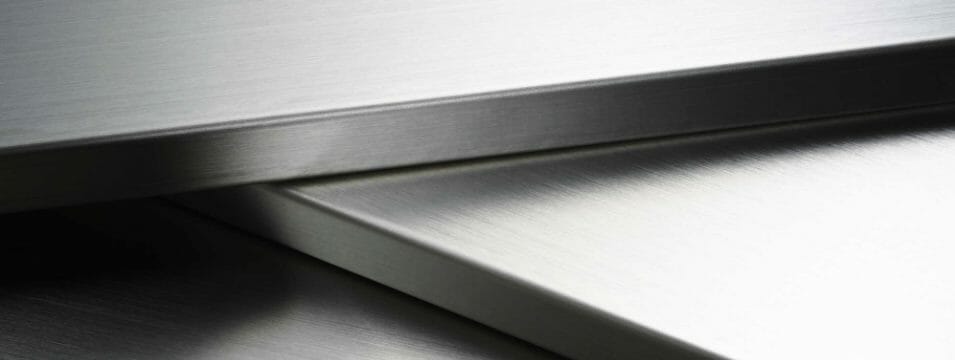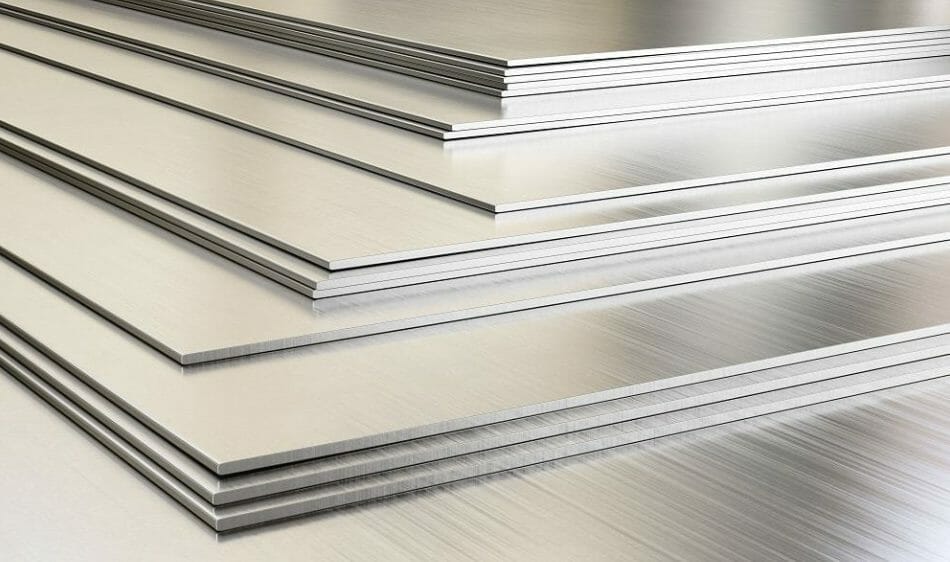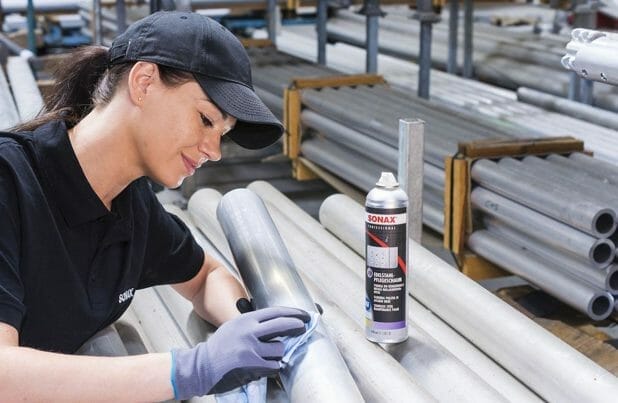Are you looking for a durable and reliable material that can be used for a variety of applications? Look no further than metric stainless steel plates. These plates are known for their strength and versatility, making them a popular choice for industries ranging from food and chemical to marine and construction.
In this article, we will provide a comprehensive guide to metric stainless steel plates. We will cover everything from their properties and benefits to their manufacturing process and maintenance. Whether you are a seasoned industry professional or a curious reader, this guide will provide valuable insights into the world of metric stainless steel plates.
Understanding Metric Stainless Steel Plate
When it comes to measuring stainless steel plates, the metric system is the standard. Understanding this system is important in determining the quality of the plate.
The thickness of a metric stainless steel plate is measured in millimeters. The width and length are also measured in millimeters. These measurements are crucial in determining the weight and strength of the plate. This information is necessary to determine if the plate is suitable for a specific application.

In addition to these measurements, it is also important to consider the type of stainless steel used. The type of stainless steel affects the properties and benefits of the plate. Four common types of metric stainless steel plates are Austenitic, Ferritic, Duplex, and Martensitic. Each type has unique properties and benefits.
Understanding Metric Stainless Steel Plate Types
| Stainless Steel Type | Properties | Benefits |
|---|---|---|
| Austenitic | Non-magnetic, corrosion-resistant | Can withstand high temperatures, durable |
| Ferritic | Magnetic, corrosion-resistant | Cost-effective, easy to machine |
| Duplex | Combination of austenitic and ferritic properties | High strength, corrosion-resistant, good weldability |
| Martensitic | Can be hardened by heat treatment, magnetic | Durable, strong, wear-resistant |
Understanding the type of metric stainless steel plate needed for a specific application is crucial. The right type of stainless steel plate ensures that the plate can withstand the environment and usage it will be subjected to.
Types of Metric Stainless Steel Plate
Metric stainless steel plates come in different types, each with its unique properties and benefits. The type of metric stainless steel plate you choose will depend on the specific application and environment it will be used in.

Here are the main types of metric stainless steel plates:
| Type | Properties/Benefits |
|---|---|
| Austenitic | Austenitic stainless steel plates are highly corrosion-resistant and durable. They are also non-magnetic and easy to weld, making them ideal for use in food and chemical industries. |
| Ferritic | Ferritic stainless steel plates are excellent for high-temperature environments. They are also highly resistant to corrosion and have good weldability. These plates are commonly used in the automotive industry. |
| Duplex | Duplex stainless steel plates are a combination of austenitic and ferritic stainless steels. They offer high strength and excellent corrosion resistance, making them ideal for use in the marine and chemical industries. |
| Martensitic | Martensitic stainless steel plates are strong and hard, making them ideal for use in applications requiring high wear resistance. They are commonly used in the aerospace and power generation industries. |
It is important to consider the properties and benefits of each type of metric stainless steel plate when choosing the best one for your application. Consult with a professional to ensure you select the most suitable type of metric stainless steel plate for your needs.
Benefits of Using Metric Stainless Steel Plate
Metric stainless steel plates offer a wide range of benefits that make them an ideal choice for a variety of applications. Here are some of the key advantages of using metric stainless steel plates:
| Benefit | Description |
|---|---|
| Durable | Metric stainless steel plates are highly durable and resistant to damage. They can withstand extreme temperatures, high pressures, and heavy loads without losing their integrity or strength. |
| Corrosion-resistant | Metric stainless steel plates are resistant to corrosion and rust, even in harsh environments. This makes them ideal for use in applications where exposure to water, chemicals, or other corrosive substances is common. |
| Easy to clean | Metric stainless steel plates are easy to clean and maintain. They are resistant to stains and do not require special cleaning agents or techniques, making them ideal for use in applications where cleanliness is essential, such as in the food or medical industries. |
| Cost-effective | While the upfront cost of metric stainless steel plates may be higher than other materials, their long lifespan and durability make them a cost-effective choice in the long run. They require minimal maintenance and are less likely to need replacement, reducing overall costs. |
Overall, the benefits of using metric stainless steel plates make them a reliable and versatile option for a wide range of industries and applications. Whether you need a durable surface for heavy machinery or a corrosion-resistant material for harsh environments, metric stainless steel plates are an excellent choice.
Read More : How Stainless Steel is Made : The Art of Creating Durable and Versatile Metal
Applications of Metric Stainless Steel Plate
Metric stainless steel plates are used in a wide range of industries, thanks to their durability, corrosion resistance, and versatility. Here are some of the applications of metric stainless steel plates:

Food Industry
Metric stainless steel plates are widely used in the food industry due to their hygienic properties and ease of cleaning. They are commonly used in food processing equipment, kitchen appliances, and food storage containers.
Chemical Industry
Metric stainless steel plates are also commonly used in the chemical industry because of their exceptional corrosion resistance. They are used to store and transport highly corrosive chemicals, acids, and other materials.
Marine Industry
Metric stainless steel plates are ideal for use in the marine industry because they are highly resistant to seawater corrosion. They are used in the construction of ships, offshore oil platforms, and other marine structures.
Construction Industry
Metric stainless steel plates are increasingly being used in the construction industry due to their strength, durability, and aesthetic appeal. They are used in the construction of high-rise buildings, bridges, and other structures that require high-quality materials.
Manufacturing of Metric Stainless Steel Plate
Metric stainless steel plates are manufactured using a variety of stainless steel alloys and fabrication techniques to achieve the desired thickness, width, and length. The manufacturing process begins with selecting the appropriate stainless steel alloy based on the desired properties of the plate, such as corrosion resistance, strength, and durability.
Once the alloy is selected, the raw material is subjected to a series of processes, including hot and cold rolling, annealing, and pickling, to produce a high-quality stainless steel sheet. The sheet is then cut to the appropriate size and shape using modern cutting technologies such as laser, plasma, or waterjet cutting.
After cutting, the plate undergoes various fabrication processes, including bending, welding, and shaping, to achieve the desired form. It is essential to ensure the highest standards of quality control in these processes to produce a plate that is defect-free and meets specifications.
The final step in manufacturing metric stainless steel plates is surface finishing, which involves polishing or brushing the surface to achieve the desired surface finish and appearance. This process also helps improve the plate’s resistance to corrosion and staining.
Maintenance and Care of Metric Stainless Steel Plate
Proper maintenance and care is critical in ensuring the longevity and performance of metric stainless steel plates. Here are some tips on how to care for your plates:
- Cleaning: Regularly clean your metric stainless steel plates with warm water and mild soap. Avoid using abrasive materials that could scratch the surface of the plate.
- Maintenance: Keep your plates dry and avoid leaving them in humid or moist environments. Moisture can lead to corrosion and rust on the surface of the plates.
- Polishing: Use a polish specifically designed for stainless steel to keep your plates shiny and prevent any damage or staining.
- Inspection: Regularly inspect your metric stainless steel plates for any signs of wear, corrosion, or damage. If you notice any issues, address them promptly to prevent further damage.

“Proper care and maintenance of metric stainless steel plates is essential for ensuring their optimal performance and longevity.”
By following these tips, you can ensure that your metric stainless steel plates remain in top condition for years to come.
Single Use Bioreactors vs. Stainless Steel
When it comes to bioreactors, two common choices are single-use bioreactors and stainless steel bioreactors. Both options have their advantages and disadvantages, so it’s important to carefully consider which one is best suited for your particular application.
Single-Use Bioreactors
Single-use bioreactors, as the name suggests, are designed for single use. They are typically made of plastic and are pre-sterilized before use. They eliminate the need for cleaning and sterilization between batches, which can save both time and money. Single-use bioreactors are also more convenient and provide greater flexibility, as they can be scaled up or down more easily than stainless steel bioreactors. Additionally, they reduce the risk of cross-contamination, which is particularly important for biopharmaceutical production.
On the other hand, single-use bioreactors have some limitations. They are generally less durable than stainless steel bioreactors and can only be used once. They are also more expensive than stainless steel bioreactors on a per-batch basis, which can make them less cost-effective for larger production runs.
Stainless Steel Bioreactors
Stainless steel bioreactors have been the industry standard for decades. They are extremely durable and can last for decades with proper maintenance. They are also more cost-effective over the long-term than single-use bioreactors. Stainless steel bioreactors are particularly useful for large-scale production runs, as they can produce a high volume of product at a lower cost per batch.
However, stainless steel bioreactors are not without their drawbacks. They require cleaning and sterilization between batches, which can be time-consuming and expensive. They are also less flexible than single-use bioreactors and can be difficult to scale up or down. Additionally, there is a risk of cross-contamination if proper cleaning and sterilization procedures are not followed.
“Both single-use bioreactors and stainless steel bioreactors have their own set of advantages and disadvantages. The best choice depends on the specific needs of your application.”
Frequently Asked Questions
If you’re considering purchasing metric stainless steel plates, you may have some questions and concerns. Below we’ve addressed some of the most commonly asked questions to help provide you with the information you need to make an informed decision.
What is the typical thickness of metric stainless steel plates?
Metric stainless steel plates come in a variety of thicknesses, which can range from as thin as 0.5mm to as thick as 100mm. The thickness of the plate you need will depend on your specific application and the amount of weight it needs to bear.
How much do metric stainless steel plates cost?
The cost of metric stainless steel plates can vary depending on several factors, including the thickness, width, and length of the plate, as well as the type of stainless steel alloy used. However, you can generally expect to pay more for thicker plates and higher-grade alloys.
What is the delivery time for metric stainless steel plates?
Delivery times for metric stainless steel plates can vary depending on the supplier and the quantity you need. However, most suppliers can provide a delivery estimate once they have received your order and know the specifics of what you require.
Can metric stainless steel plates be customized?
Yes, metric stainless steel plates can be customized to meet your specific needs. This customization can include cutting the plate to a specific size or shape, as well as adding holes or other modifications. Contact your supplier to discuss your customization options.
If you have any other questions or concerns about metric stainless steel plates, don’t hesitate to contact your supplier or a professional in the field. They will be happy to assist you and provide you with the information you need to make an informed decision.






